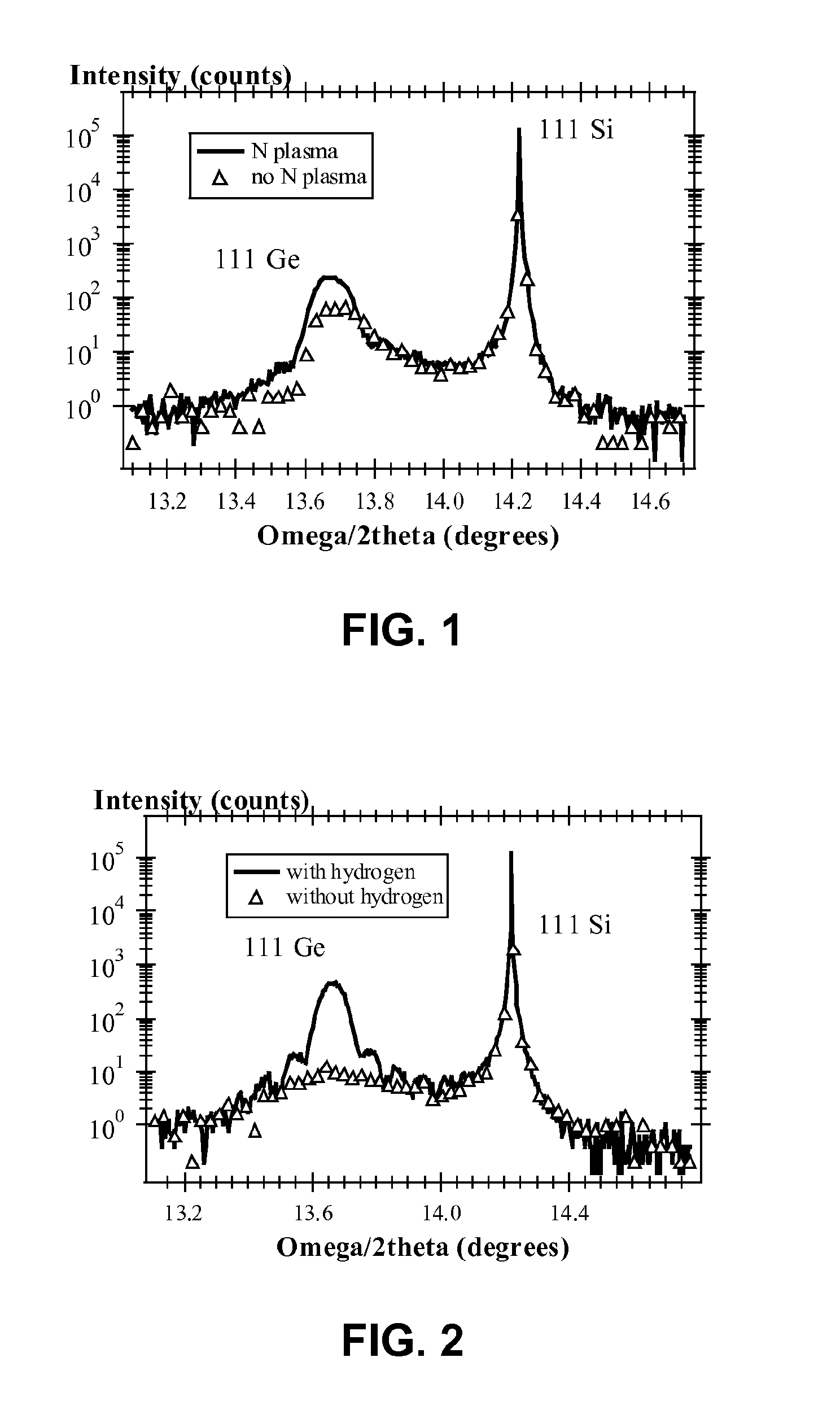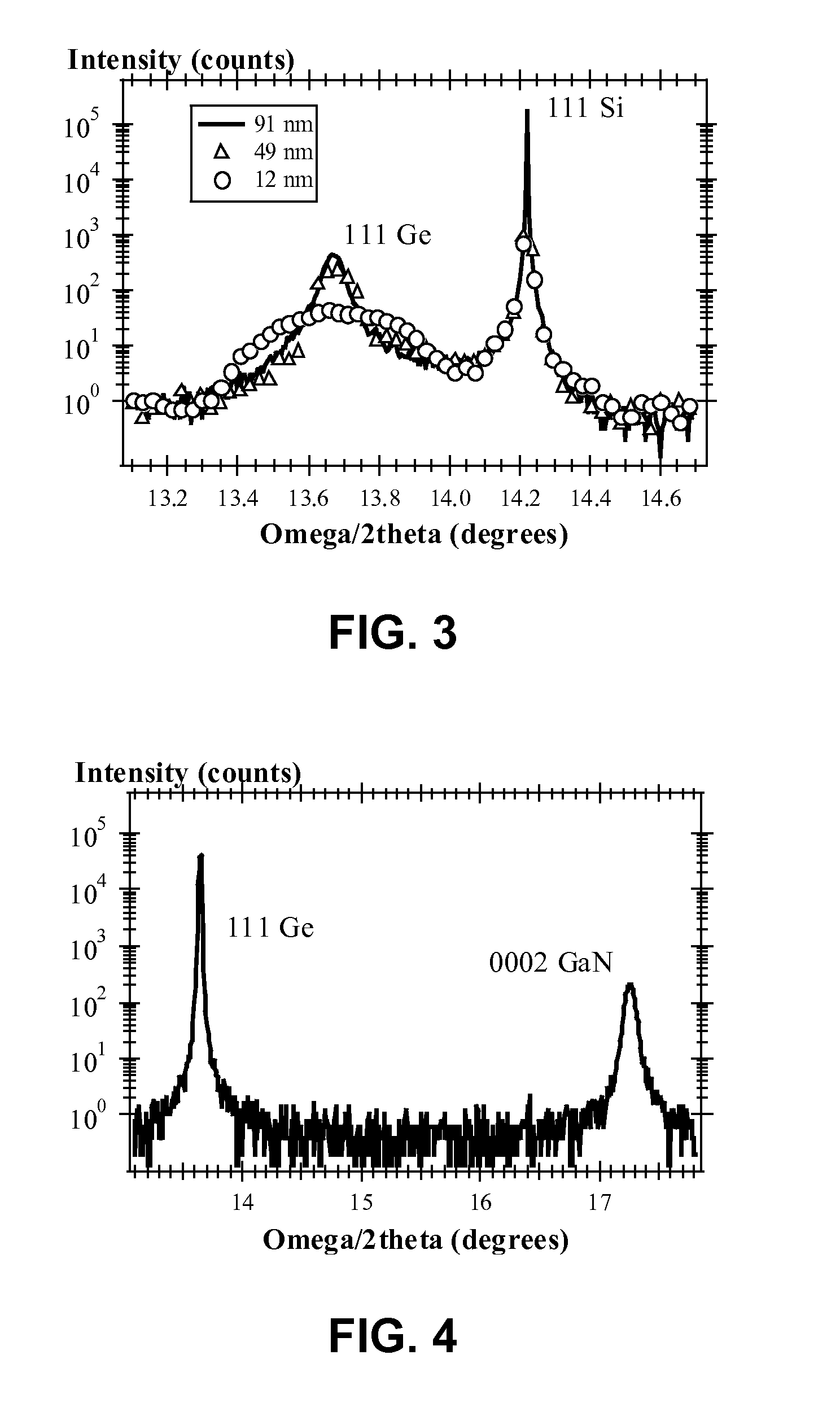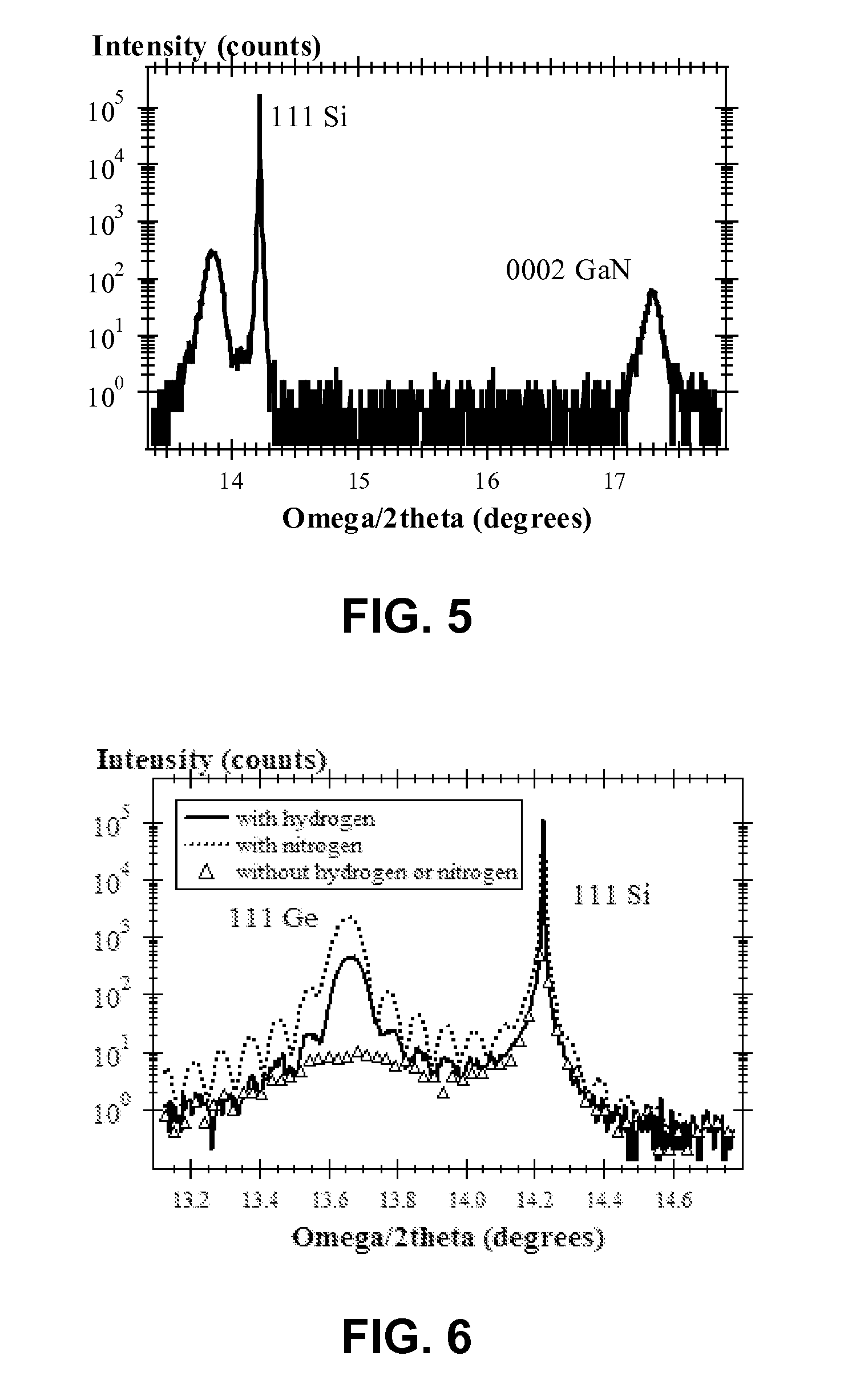Method for producing a crystalline germanium layer on a substrate
a technology of germanium and crystalline germanium, which is applied in the field of production of gebased layers on a base substrate, can solve the problems of difficult to obtain high-quality crystalline ge on si substrates, high surface roughness, and high crystal quality of ge layers
- Summary
- Abstract
- Description
- Claims
- Application Information
AI Technical Summary
Benefits of technology
Problems solved by technology
Method used
Image
Examples
example n357
[0176]For this example, Si(111) substrates were chemically cleaned to remove metal contamination, particles and native oxides. Hereafter a ˜50 nm thick a-Ge (amorphous Ge) was deposited by PECVD on the Si(111) substrates. Then, the substrates were annealed in vacuum at a ˜1e-8 torr background pressure and at a temperature of ˜750° C.
[0177]From the results obtained from these experiments it was found that after deposition, the Ge was amorphous (according to the RHEED (Reflection High Energy Electron Diffraction) measurements). The RHEED results showed streaks during annealing at a temperature of ˜450° C.
[0178]XRD (X-Ray Diffraction) measurements showed a diffraction peak, originating from crystalline Ge, with a omega / 2theta FWHM of 506 arc seconds.
[0179]As a conclusion of this experiment it can be said that a-Ge can be formed by PECVD on Si(111) substrates. This a-Ge can be crystallised when annealed at sufficiently high temperature. It was furthermore found that it was possible to c...
example n362
[0180]This experiment was similar to the previous experiment, i.e. example N357, except that now instead of annealing in vacuum, annealing was now performed under N plasma at ˜750° C. (˜2e-5 ton background pressure).
[0181]The Ge peak observed by XRD measurements showed higher intensity than for example N357, indicating better crystal quality in case of the present example. The FWHM (full width at half maximum) was found to be smaller than for example N357: 382 arc seconds (506 arc seconds for example N357), which also indicates better crystal quality in case of the present example. The XRD rocking curve FWHM was 471 arc seconds for the present example and was 665 arc seconds for example N357, which also indicates better crystal quality in case of the present example.
[0182]FIG. 1 shows an XRD Omega / 2theta scan a 50 nm thick crystallised germanium layer on Si(111) comparing the present example with example N357. The solid line shows the result for the present example while the triangl...
example n501-a1
[0214]The present example is similar to example N499-A1, except that in the present example no H2 flow was used during deposition of Ge. The background pressure was around ˜1e-9 torr. Annealing was performed under N2 atmosphere, at a temperature of 600° C. for 1 minute.
[0215]A good Ge peak was observed for example N499-A1. A small peak was observed for the present example (N501-A1). The XRD rocking curve FWHM for example N499-A1 was found to be 287 arc seconds, while it was found to be 958 arc seconds for the present example (N501-A1).
[0216]FIG. 2 shows an XRD Omega / 2theta scan of a crystallised a-Ge layer on Si(111) with (solid line, example N499-A1)) and without (triangles, example N501-A1)) hydrogen being present in the a-Ge layer.
[0217]The surface roughness is comparable for both examples and was found to be around 0.8 nm.
[0218]From these examples it can be concluded that directing a H2 flux onto a sample while depositing a-Ge leads to incorporation of Hydrogen in the a-Ge layer...
PUM
| Property | Measurement | Unit |
|---|---|---|
| temperature | aaaaa | aaaaa |
| RMS surface roughness | aaaaa | aaaaa |
| thickness | aaaaa | aaaaa |
Abstract
Description
Claims
Application Information
 Login to View More
Login to View More - R&D
- Intellectual Property
- Life Sciences
- Materials
- Tech Scout
- Unparalleled Data Quality
- Higher Quality Content
- 60% Fewer Hallucinations
Browse by: Latest US Patents, China's latest patents, Technical Efficacy Thesaurus, Application Domain, Technology Topic, Popular Technical Reports.
© 2025 PatSnap. All rights reserved.Legal|Privacy policy|Modern Slavery Act Transparency Statement|Sitemap|About US| Contact US: help@patsnap.com



